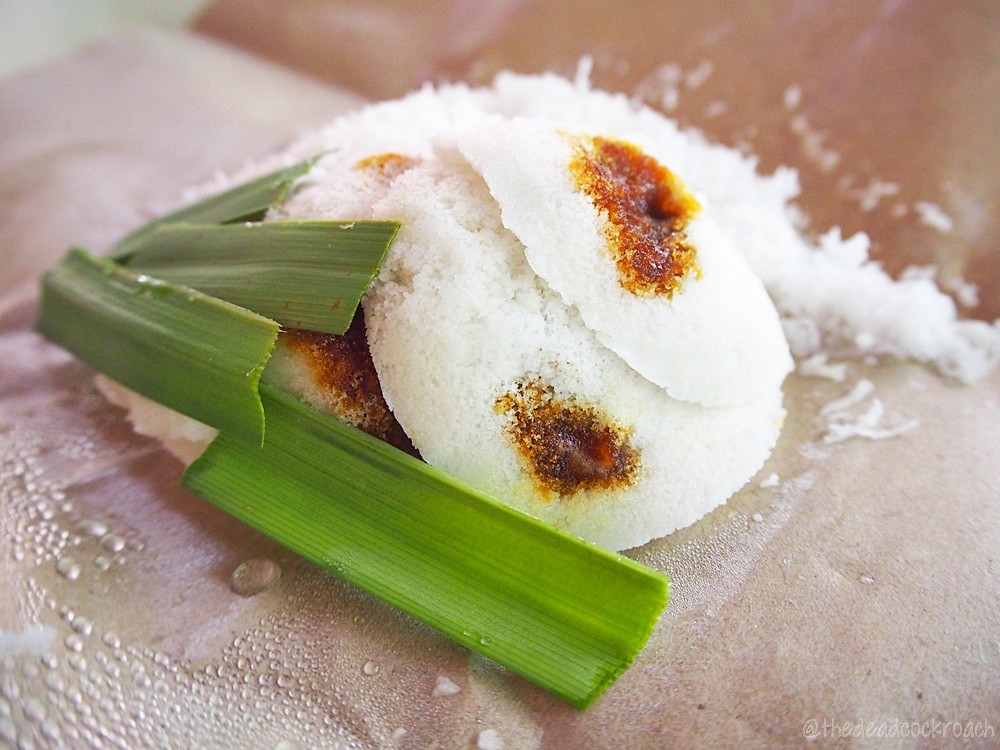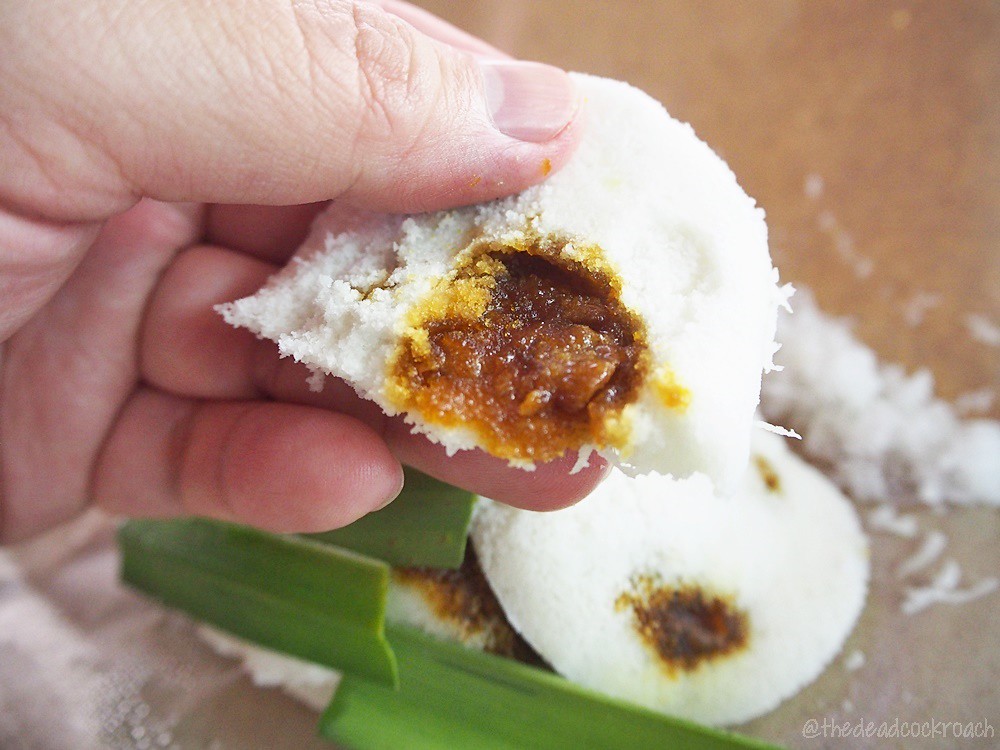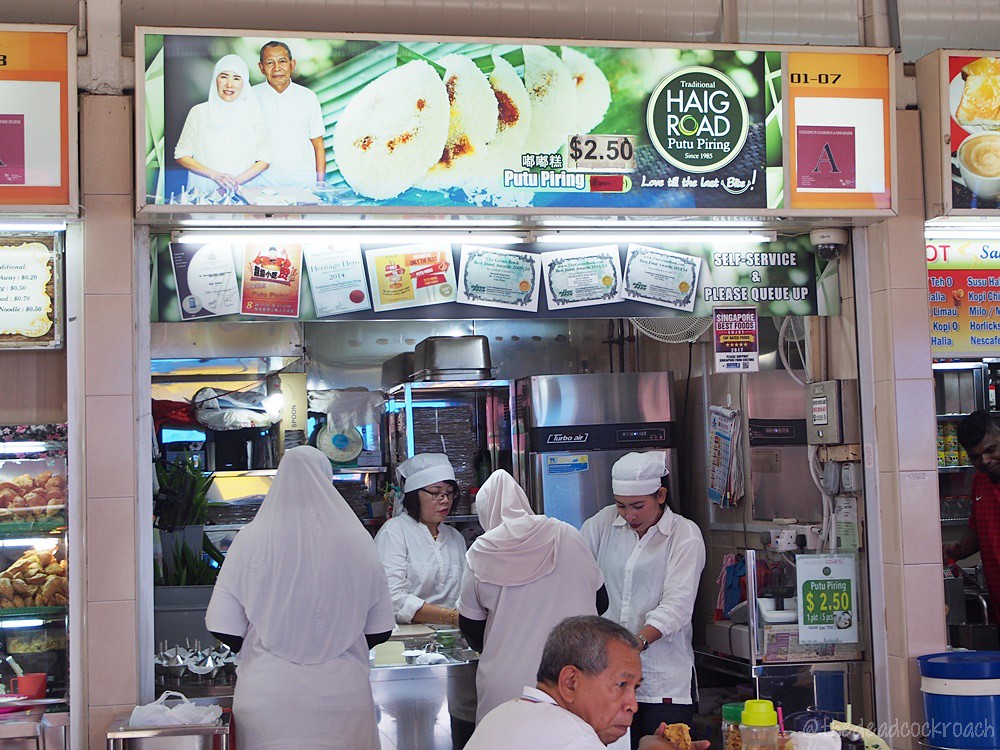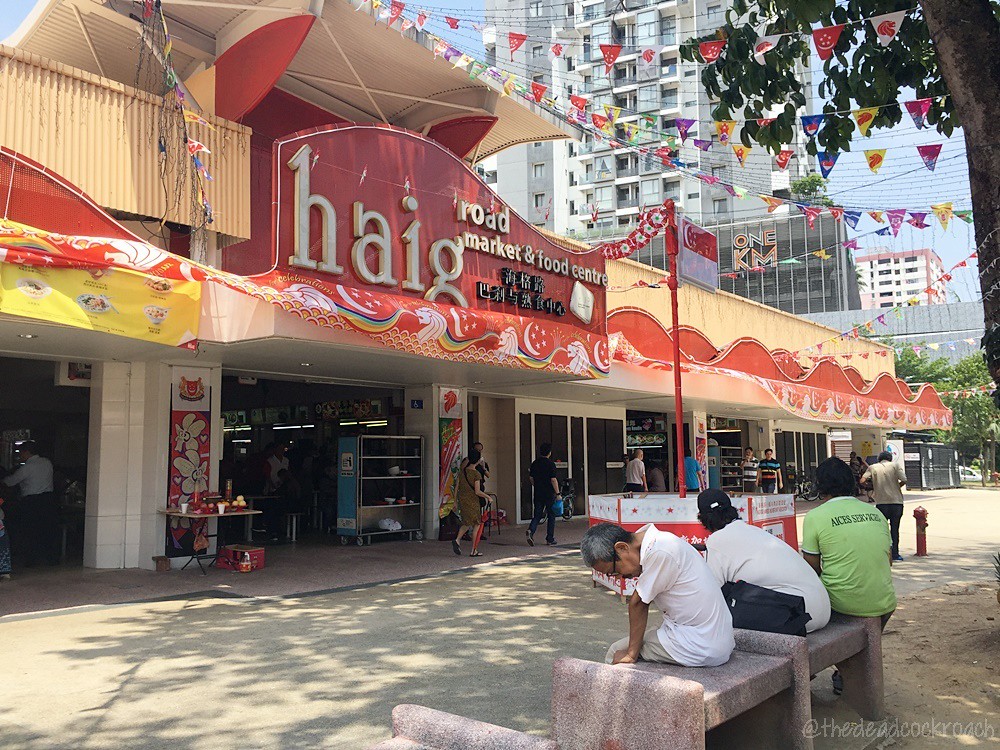
To be honest, I have long heard about it but never tasted one before.
I always wonder what is the difference between the putu piring and the tutu kueh since they look so similar in appearance?
After trying Traditional Haig Road Putu Piring for the first time, I finally know that the Malay putu piring is filled with gula melaka instead of coconut and peanut like its Chinese cousin.

Operating like clockwork, each makcik have a specific task to do and one which they expertly delivers.
The first makcik in the assembly line puts some rice flour in a conical-shaped mould, top it with gula melaka before piling on more rice flour and passing it to a second makcik who flips it over onto a muslin cloth and transfer it onto the steamer.
Once ready, a third makcik will remove them from the steamer and wrap them in brown paper together with some lightly salted grated coconut and a couple slices of pandan leaves.

As I unwrap the brown paper on the table, the aroma of pandan fragrance wafted to my nose.
The steamed rice cake is soft, moist and fluffy. It is best eaten hot when the gula melaka is still in its molten state. As I popped one inside my mouth, I could literally feel the rice flour melting away, revealing the luxurious gula melaka within while its fragrance fills up my oral cavity.
At $2.50 for five pieces, it may seem a little pricey but behind the production of this tiny little kueh is sheer hard work. Just processing the rice flour alone takes up to three days.
It is a small price to pay for something so authentic and freshly handmade at the stall everyday.


TRADITIONAL HAIG ROAD PUTU PIRING
Haig Road Market & Food Centre
14 Haig Road
01-07
Singapore 430014
Business Hours
Mon - Sun: 11am - 9.30pm
Google Map: https://goo.gl/maps/xhV2BAh5dLG2
Follow/Like
twitter: dead_cockroach
instagram: thedeadcockroach
fb page: the dead cockroach





